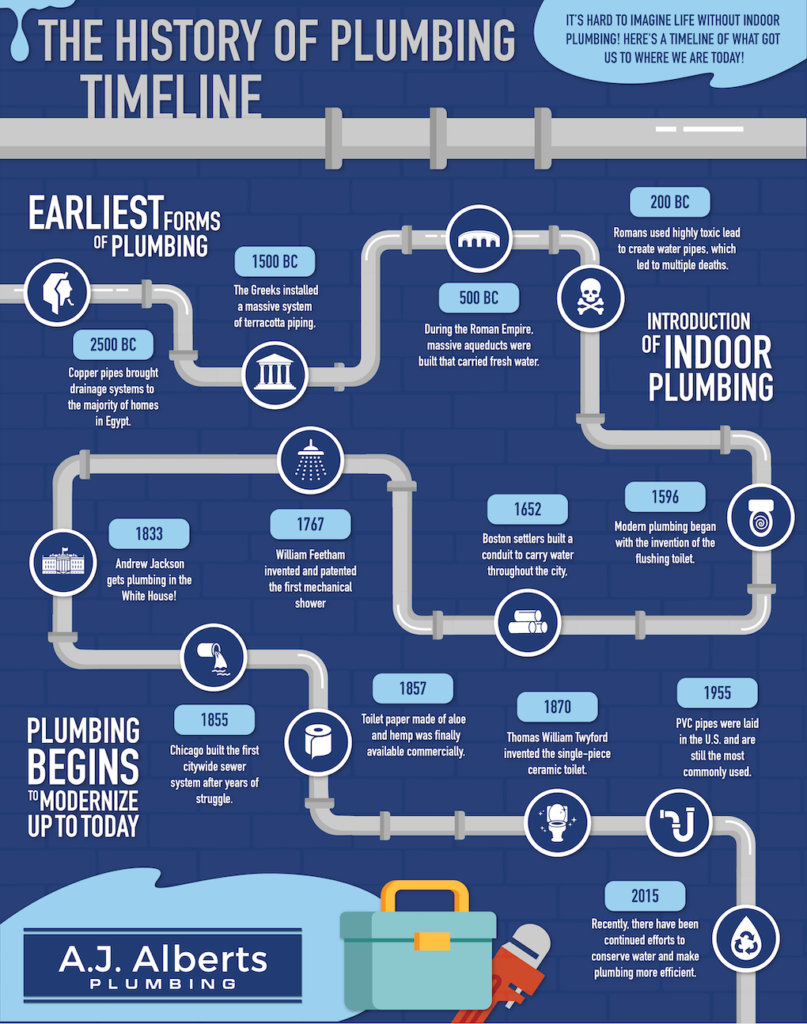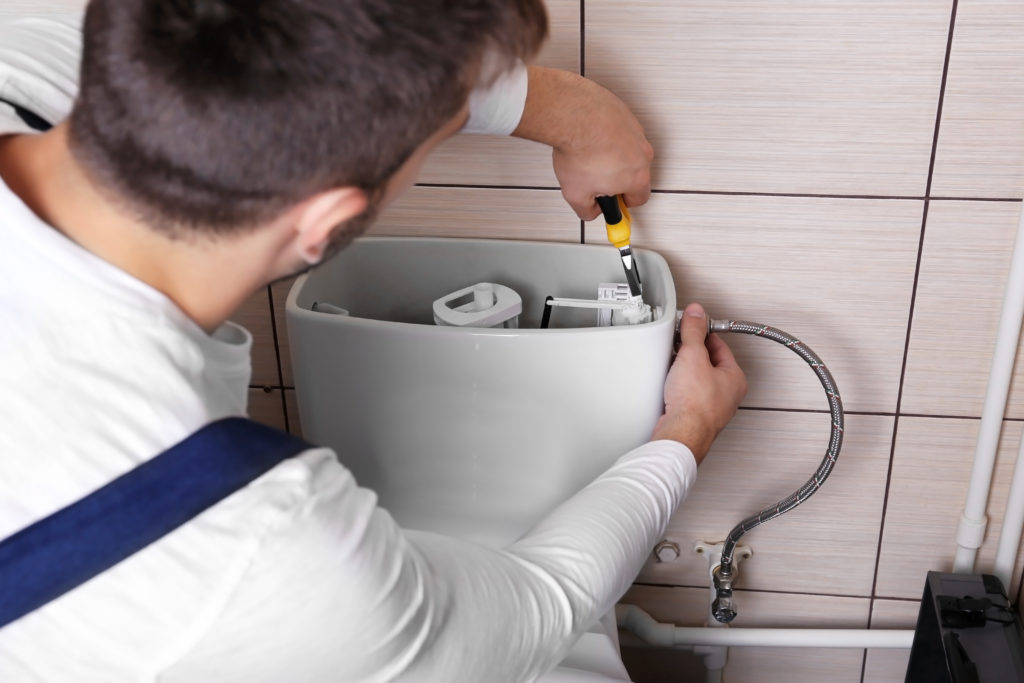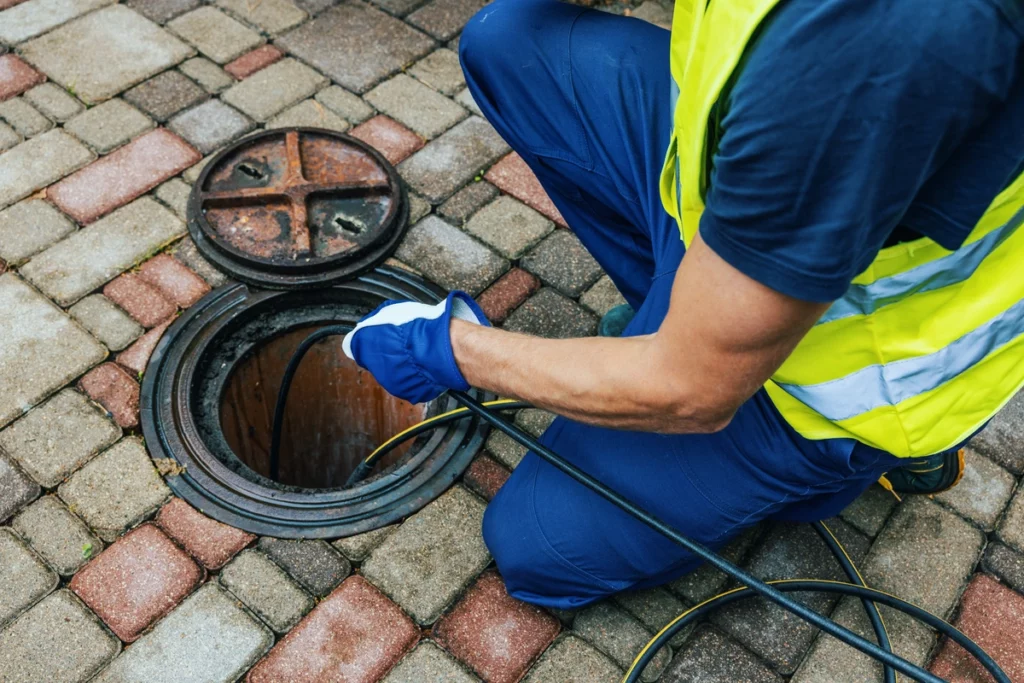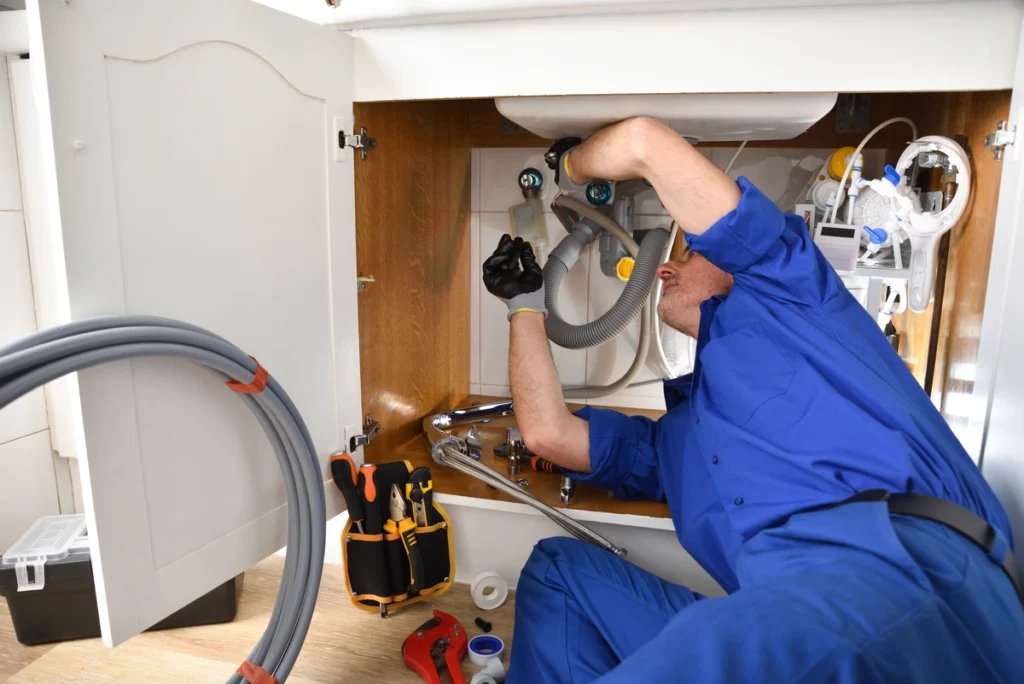The history of plumbing goes back so much farther than you even think—as far back as 3000 BC! It’s hard to imagine life without indoor plumbing, but the reality is that it wasn’t until the late 1800s when indoor plumbing came to America. And it took a while to catch on, which means that our grandparents growing up in the 40s likely didn’t even have hot water pipes or a flushing toilet! Crazy, right?
There have been many key milestones related to plumbing throughout history: from Roman times to modern-day innovations like the toilet flush mechanism, which was invented by Thomas Crapper in 1827. Yes, as in, going to the crapper. We’re as shocked as you! So we’re going to build out a timeline of the history of plumbing from where it started ages ago to where it is now and why AJ Alberts wouldn’t exist without it.
History of Plumbing
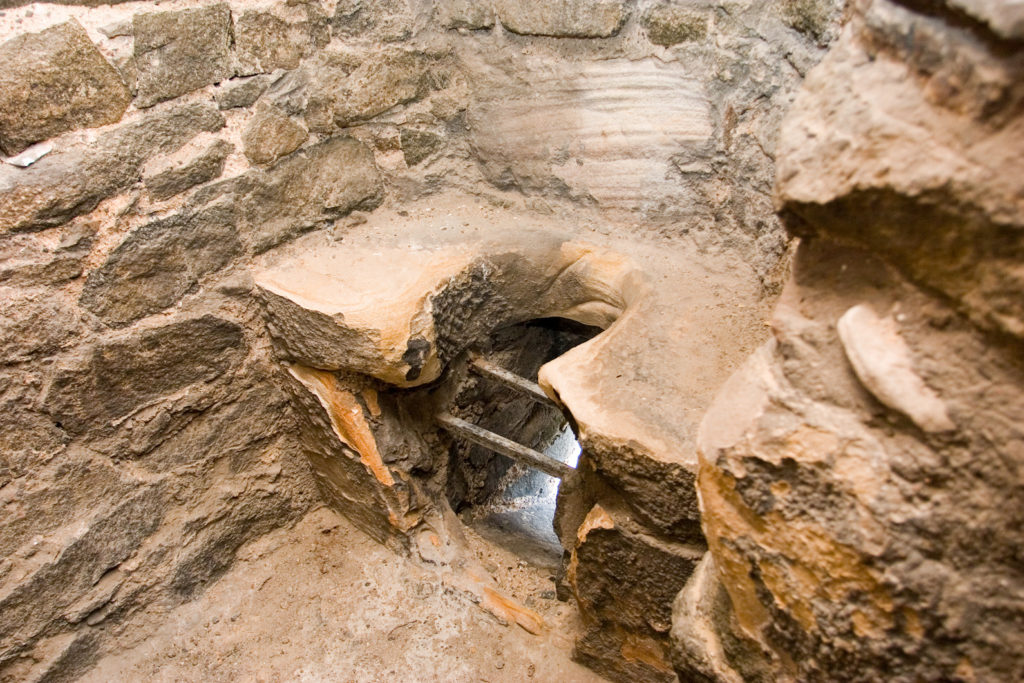
The Earliest Forms of Plumbing 4,000 to 500 BC
Some of the earliest forms of plumbing were created by Egyptians around 3000 to 2500 BC. It’s widely believed that they were the first to use irrigation in farming, so with the production of metals like copper and bronze, this was the next step in providing drainage systems to the people of Egypt.
Egyptian Copper Pipes
The first copper pipes brought drainage systems to the majority of homes in Egypt. It’s said that their culture set cleanliness as a huge priority, and even small huts would be attached to the copper pipe drainage system so they could bathe. These systems would also pull water from the Nile and feed their crops, leaving reserves for dry months, so their fields were always thriving.
Interestingly enough, in the 1990s, an ancient pyramid (4500 BC) was excavated, and the team of archaeologists found one of those copper drainage systems that led to the pyramid funerary complex. Wow!
Ancient Greek Terra Cotta Pipes
Cut to 1500 BC, where the ancient Greeks made some of the most sophisticated drainage systems up to that point. Using the steep grades on the Crete island, the Greeks installed a massive system of terracotta piping, including manholes and engineered joints; they even lead water to sinks and lavatories using this system.
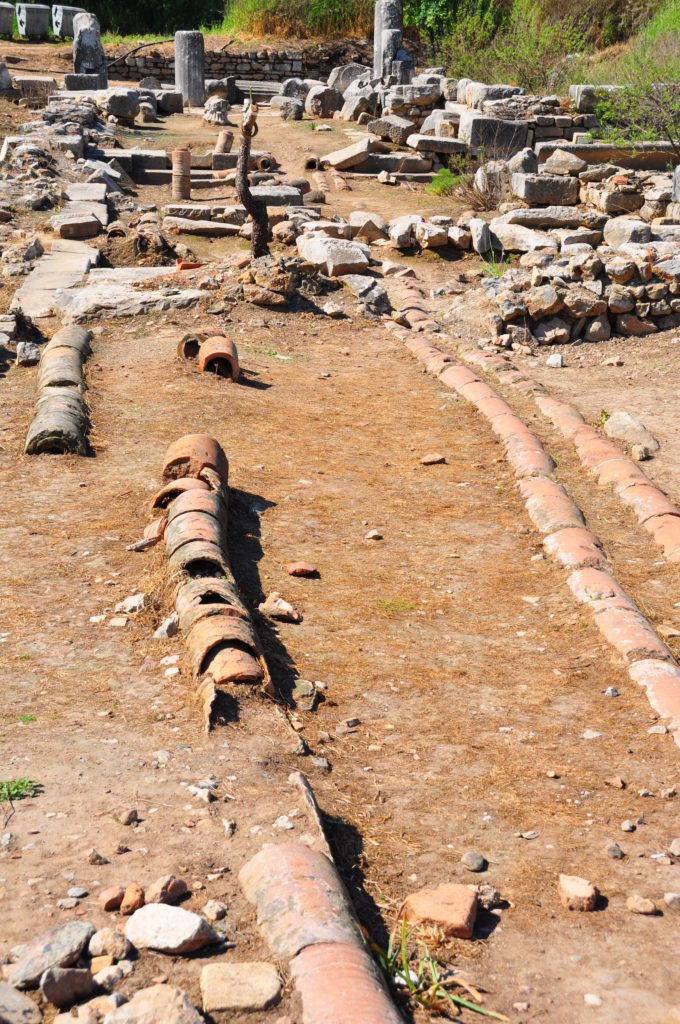
Plumbing During the Roman Empire
During the Roman Empire (500 BC to AD 476), more extensive systems were put in place that laid the groundwork for the systems we use today. They had sinks, showers, toilets, bathtubs, and everything in between attached to these extensive drainage and plumbing systems. It was pretty impressive!
The Romans built massive aqueducts that would carry fresh water from the city, over 50 miles round-trip, to farmland in the country. Much of the freshwater would be stored in tanks distributed to sinks, fountains, and public baths. Romans who were wealthy (like the patrician upper-class) had both hot and cold water in their households.

These were just a few of the amazing leaps in ingenuity and enhancements made to sewer, plumbing, and other water systems throughout this period. They made some of the most significant jumps in advancements than any other time.
Lead Pipes and the Fall of the Roman Empire
But sadly, there was a fatal blip during this time that led to many deaths due to lead poisoning. Romans made the mistake of using highly toxic lead to create water pipes around 200 BC. We obviously now know that lead should never be used for piping. Still, at this time, it led to multiple deaths and especially hit young children and pregnant women the hardest with an incredible rise in miscarriages. It’s often speculated that this severe decline in deaths and population growth played a role in the fall of the Roman empire.
A Semblance of Indoor Plumbing is Introduced: 1500 to 1800
The beginnings of what we know as modern plumbing began with the invention of the first flushing toilet in 1596. Queen Elizabeth I had an estranged godson, Sir John Harington, who, after being banished from the royal court, went on to not only build his own home but build the first flushing toilet.
Long story short, Queen Elizabeth I ended up seeing this amazing invention and insisted he build one for the Palace, and the rest is history. And if you didn’t connect the dots already, Sir John is why people today might say they’re going to “The John.”
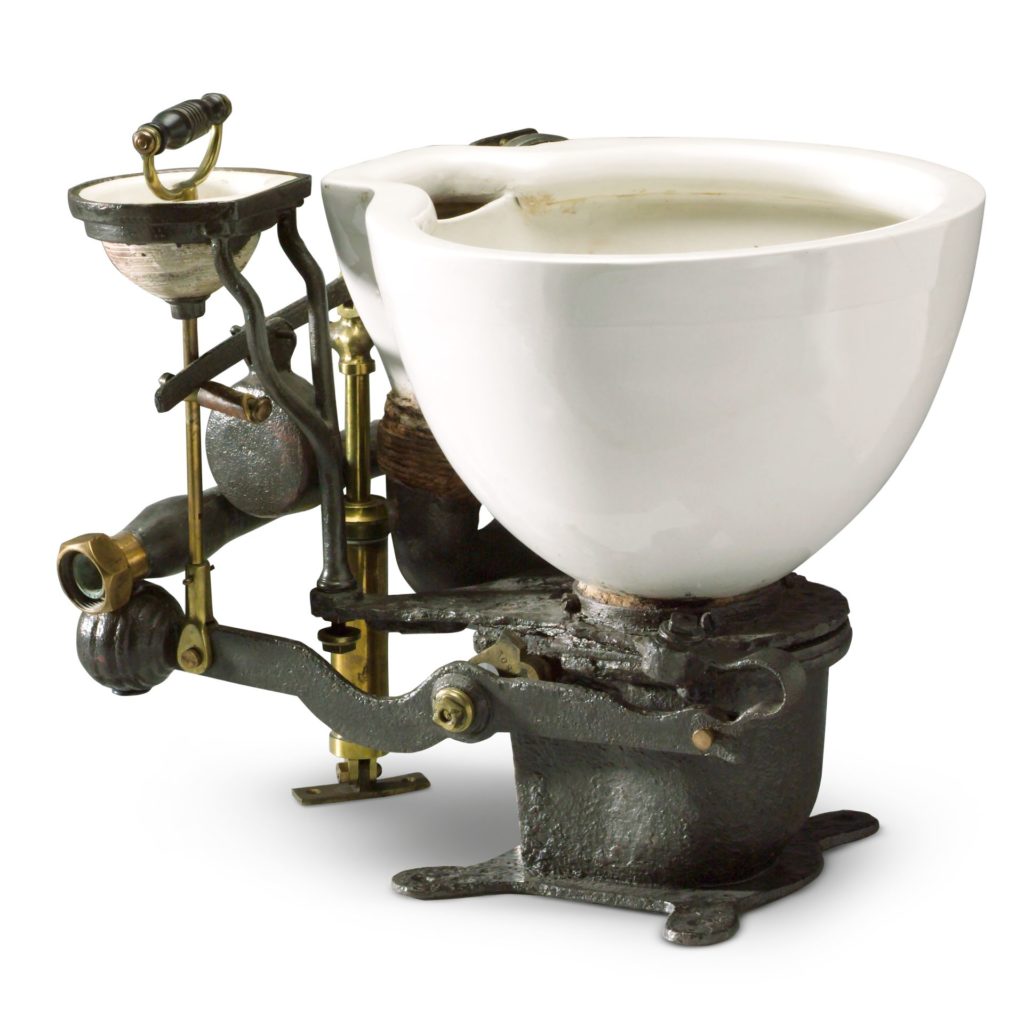
The First Large Scale Water Systems
We are starting to see more in-home plumbing and more expansion of large-scale water systems that go beyond aqueducts and underground pipes to carry water inland. Just 20 years after Boston was founded, the first city-wide water system was built. In 1652, a corporation made up of early Boston settlers built a conduit to carry water throughout the city, primarily for putting out fires and local domestic use. They hollowed out trees for the pipe vents and built a decently sustainable system! Now that’s ingenuity!
Across the Atlantic, the first city water main was constructed under King Louis XIV in 1664. The 15-mile cast-iron water main carried water from a pumping station on the Seine river to his palace in Versailles. It went on to supply the palace fountains and garden with water until 1994.
The First Mechanical Shower is Patented
After centuries of taking baths, people finally got the chance to take a shower in 1767 when William Feetham invented and patented the first mechanical shower for bathing purposes. It wasn’t a perfect design, as it was simply a basin of water and a hand pump to lift the water up to a contraption above yourself, where you pulled a chain to allow the water to dump on you. Then you would pump it back up and repeat.
The recycled water system didn’t appeal to many, as a hot bath still seemed much more appealing. Technically the first showers were in ancient times when royalty and wealthy socialites would hire slaves to dump water on them instead of sitting in a bath. However, it would take several more years and the invention of the water heater to make showering a bit more popular and common in households.
A Refillable Toilet!
The first flushable toilet took care of one issue (getting rid of waste) but couldn’t solve two major issues: the awful sewer smell and refilling the bowl with water. Alexander Cumming managed to get a patent for a prototype that solved both problems. His design included an s-trap pipe like we have today, which prevents sewer gas from escaping into our bathrooms, and a mechanism that allowed the bowl to be emptied and refilled again using water from the underground plumbing systems. This would eventually lead to the design you see in homes today.
Plumbing Begins to Modernize: 1800 to 1900
After a lot of trial and error and many outstanding inventions, plumbing begins to adapt a bit for the modern world. As cities grow and more and more people need access to water for domestic use, some significant advancements have been made to ensure that happens.
First Steps Towards Municipal Water
Philadelphia, who had spearheaded many of America’s early innovations, took the first steps towards making water not only safe but readily available to everyone. So they turned their steam engine water system into a river-run dam and water wheel system to supply water to all paying customers and allowing FREE refillable water from any fire hydrant.
Andrew Jackson Gets Plumbing in the White House!
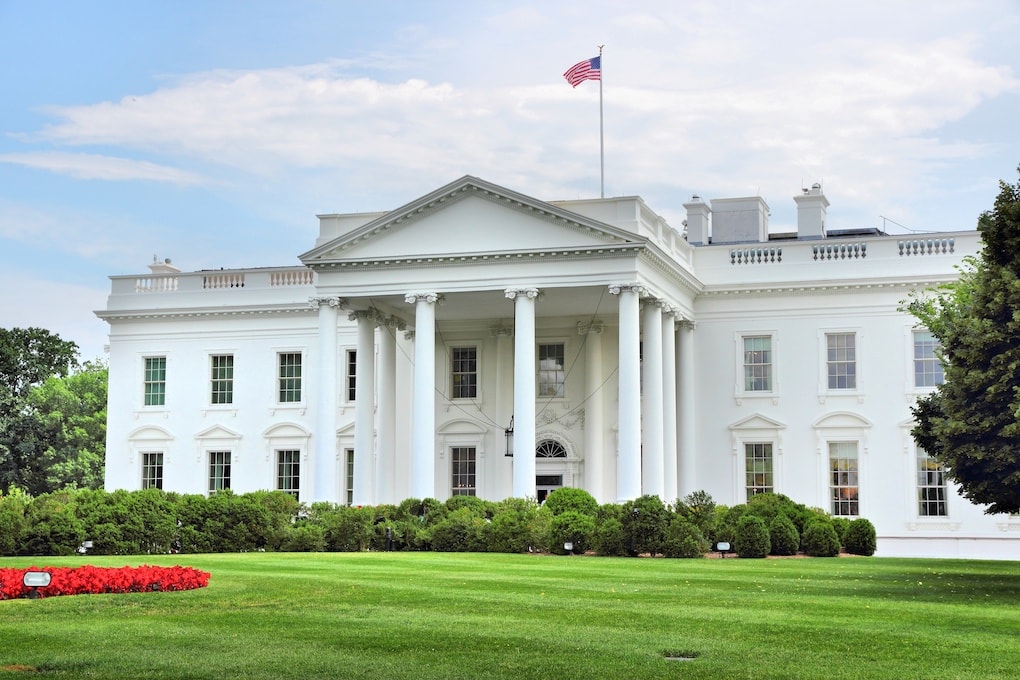
Until 1833, there was no plumbing in the White House and was just pumped from a well in one of the neighboring buildings. It took another 20 years to get plumbing on the second floor of the White House! Who knows why it took so long (a hotel had indoor plumbing before the White House did), but they sure were happy it did.
First Sewer System in America
Chicago built the first citywide sewer system in 1855 after years of struggle. They actually raised the city streets by 8 feet or more to make room for the underground sewer system. The problem was that underneath Chicago, it was quite literally a swamp that was making people fatally ill from typhoid, dysentery, and cholera because it would get in their drinking or bathing water.
Chicago solved that problem and had also successfully reversed the flow of the Chicago river thanks to the construction of their massive canals throughout the city. This helped them become one of the biggest trading hubs in the country.
Toilet Paper: Finally
The list of things people used as toilet paper before toilet paper was invented is long, strange, and disgusting, not gonna lie. So we’ll just say, toilet paper (or medicated paper) made of aloe and hemp was finally available commercially in 1857. The advertising was very fitting and said, “The Greatest Necessity of the Age!”
The First Ceramic Toilet
More often than not, the first toilets were a hole in the ground, and more sophisticated methods had a chair above the hole, much like you would see in a satellite or vault toilet. Then they began to be manufactured using things like clay, vitreous china, resin, and wax, amongst other hardy materials. Then, in the 1870s, a pottery manufacturer named Thomas William Twyford invented the single-piece ceramic toilet.
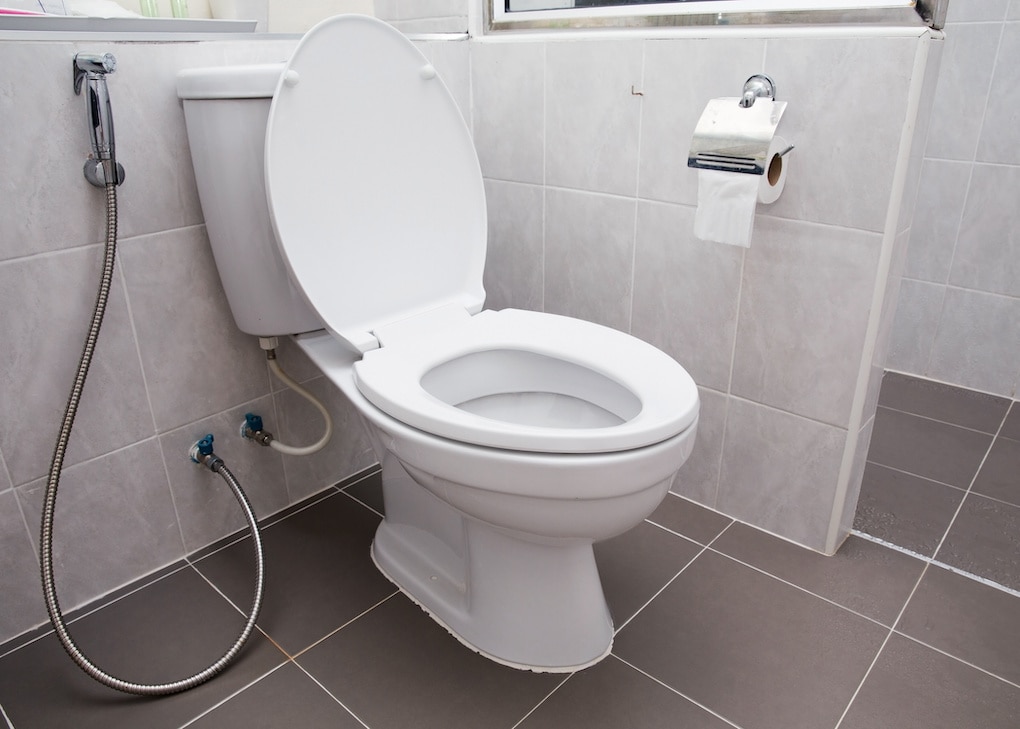
This breakthrough, paired with the invention of the water heater, helped indoor plumbing in homes pick up rapid speed. Now everyone could have their ceramic toilet, sink, and tub in their homes with both cold and hot water right from the tap.
The Plumbing We Know Today: 1930s to Now
And now we get to the plumbing we use today, which would never be where it is now without the amazing innovations throughout the last 6,000+ years. From the first pipes in ancient Egypt to the sacrifices people made while figuring out clean water in Chicago less than 200 years ago.
Standardized Plumbing Codes
Under Herbert Hoover’s presidency, the first plumbing code was published. It was time to control how plumbing was installed in homes and cities to ensure efficiency and proper use. This was a critical first step towards ensuring clean and safe water for everyone.
PVC Pipes
After World War II, there was a significant metal shortage. This led to the manufacturing of plastic pipes for plumbing instead of expensive, limited metal. As a result, the first PVC pipes were laid in the U.S. in 1955 and are still the most commonly used plumbing pipe in the country.
Water Conservation Efforts
As recently as 2015, there have been continued efforts to conserve water and make plumbing more efficient. These efforts have made toilets more efficient (flushing only 1 to 2 gallons per flush, and the same with faucets and showerheads. Imagine how much water had been wasted for hundreds and thousands of years because of the inefficient plumbing systems.
No matter which way you dice it, we are so fortunate to live in a time where we don’t have to trek for water, we get hot showers in our homes, and we get to flush the toilet and never think twice about it being an issue. Our municipal water systems are some of the best in the entire world, and we are fortunate to have some of the cleanest drinking water. Never forget the decades upon decades of trial and error, smells and disease, and the innovations that got us to where we are today.
Thanks to these inventors, AJ Alberts gets to exist! And we are here for any plumbing issue you have, any upgrades you want, and a showroom to help you remodel your bathroom. To get started, contact us and set up a time to visit our showroom full of state-of-the-art toilets, fixtures, and faucets!


